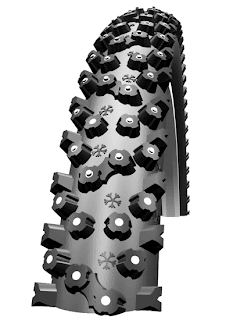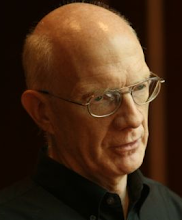I'm very thankful to be a cycle-commuter. It greatly increases my health (mental as well as physical), it saves me money, and it does its part to save the planet. It has such a salutary effect on my lifestyle that I'm sure I would bore to tears anyone who asked me why I cycle and was willing to stand around and hear the answer.
One of the questions I therefore ask myself (repeatedly) is, "Since cycling provides
so many benefits, why don't more people cycle? What would it take to get more people on the road?" Certainly one (oft repeated here) obstacle is the irrational fear of traffic. (Irrational, that is, for people with traffic cycling skills.) Once a cyclist has a high skill level, it's no problem to cycle in American traffic.
However, it's just not rational to expect a large number of people to somehow magically develop these skills. So in the absence of [insert magical event here], how do we change the environment (and I use the word "environment" in the broadest sense) to effect this desirable change?
I'm not the only person who has been asking this. Fortunately. (If I were, very little would have gotten done.)
Dr. John Pucher is a professor in the Bloustein School of Planning and Public Policy at Rutgers University, and he has studied bicycle use in all its variants across the world. Pucher's bio page is
here , so I won't repeat it. Suffice it to say that this guy

is doing important work in the areas of public policy and public health. He (along with a Rutgers PhD candidate, Ralph Buehler) have written a well researched
white paper (PDF) and an excellent presentation (in both
video and
slideshow form) on the topic "Cycling for Everyone" which studies cycle use worldwide, and which focuses on the ways governments can encourage cycling utilization by policy in the following areas:
- Better facilities and traffic engineering
- Integration of biking with public transport
- Traffic calming of resiential neighborhoods
- Mixed-use zoning and improved urban design
- Traffic education
- Traffic regulations and enforcement
He's given this presentation in various forms in fora in New York City (4/2007), Louisville, KY (4/2007), Vancouver, BC (5/2008) and at the League of American Bicyclists National Bike Summit in Washington, DC (3/2007). So this is no big secret by any means, but it's definitely information that bears repeating, and passing on.
The presentation is in some ways a laundry list, and I think that there are some implementations in Europe that will have difficulty finding acceptance in the US (30-kph speed limit zones for example) but there are many that are already "mainstream" practices in the US, e.g. traffice calming and bike carriers on public transit. The really good news here is, all the policy research has been done. Now it's only a matter of using that research to
bludgeon convince our legislators that this stuff is
important for our health, our well-being, and our energy policy also. I think the League has done good work in this area, and that's why I'm a member of it.
So, hats off to you, John Pucher. Here's wishing you success in getting your policies put in place. And, as long as we're being thankful,
thank you for the good work you've done and continue to do.







